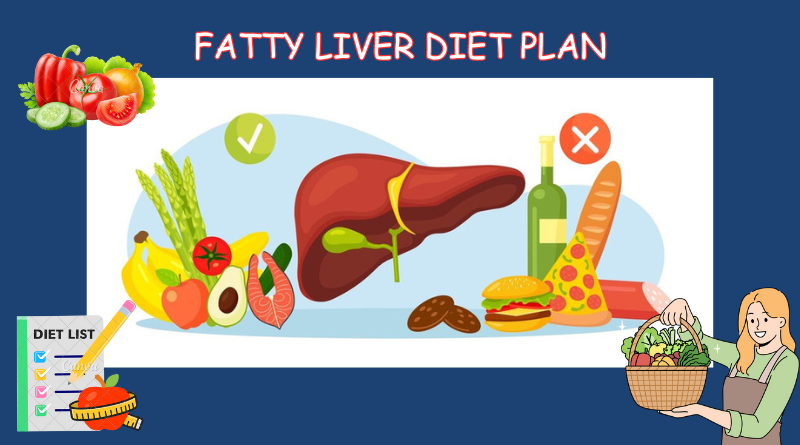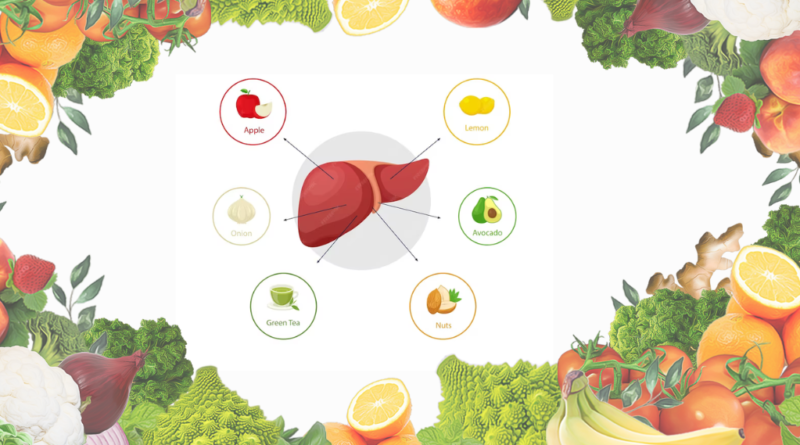What Should I Expect from the 21-Day Fatty Liver Diet Plan?
Fatty liver disease is a prevalent condition characterized by the accumulation of fat in the liver cells, which can lead to inflammation and scarring if left untreated. Implementing a complete fatty liver disease diet plan is crucial for effectively managing this condition. This diet plan places a strong emphasis on nutrient-dense foods such as fruits, vegetables, whole grains, and lean proteins and reduces consumption of processed carbs, refined sugars, and saturated fats. Excess fat is burned and metabolic function is enhanced by regular physical activity, which is another essential component. The complexities of a fatty liver disease diet plan will be covered in detail below, along with specialized advice to help you on your path to improved liver health.
Diet in Managing Fatty Liver
Dietary interventions are essential for maintaining liver health and lowering fat accumulation in the treatment of fatty liver. Choosing foods that are high in nutrients and low in unhealthy fats and sugars is crucial when creating a liver diet plan. People can take proactive measures to slow down the progression of fatty liver disease and improve their general health by following a comprehensive liver diet plan.

An Effective and Easy 21-Day Fatty Liver Diet Plan
A fatty liver diet plan typically focuses on reducing fat intake, promoting weight loss (if necessary), and incorporating foods that support liver health. Remember that before making any big dietary changes, you should always speak with a healthcare provider if you think you may have fatty liver disease or any other liver ailment. Here’s a general outline of a 21-day fatty liver diet plan:
Day 1–7: Beginning Phase
Focus on avoiding the following meals and drinks during the first week, as they may exacerbate fatty liver disease:
Steer clear of sugary foods and beverages: Don’t eat or drink anything that has added sugar, such as candy, desserts, or processed foods.
Limit Saturated Fats: Cut back on processed snacks, fried foods, and high-fat meats.
Reduce alcohol: If you’re a drinker, you might want to consider giving it up at this time or only consuming small amounts.
Boost Your Fibre Intake: To aid with digestion and encourage fullness, include a lot of fruits, vegetables, and whole grains in your meals.
Keep Yourself Hydrated: To promote liver function and general health, sip on lots of water throughout the day.
Day 8–14: Phase of Incorporation
Start introducing healthier foods and lifestyle practices during the second week,
Focus on Lean Proteins: Select lean protein sources such as beans, fish, chicken breast, and tofu.
Healthy Fats: Incorporate, but only in moderation, foods high in good fats, such as avocados, nuts, seeds, and olive oil.
Portion Control: Be mindful of serving sizes to prevent overindulging and, if required, encourage weight loss.
Regular Exercise: Make physical activity a part of your daily routine by aiming for at least 30 minutes a day, most days of the week, at moderate intensity.
Day 15-21: Maintenance Phase
Follow these guidelines for a healthy diet and lifestyle during the last week:
Balanced Meals: Arrange meals that have an ample amount of fruits and vegetables, lean proteins, healthy fats, and complex carbohydrates.
Mindful Eating: Use mindful eating strategies, including chewing carefully, observing your body’s signals of hunger and fullness, and appreciating every taste.
Track Your Progress: Keep tabs on your dietary consumption, exercise routine, and any modifications to your general health or symptoms. Make any required modifications to your plan.
Seek Support: If you need more direction and inspiration, think about getting in touch with a licenced dietitian, healthcare provider, or support group.
7-day fatty liver diet meal plan
Dietary management of fatty liver disease is crucial for maintaining liver health and lowering the risk of complications. The purpose of this 7-day fatty liver diet meal plan is to provide wholesome, well-balanced meals that promote liver function and aid in controlling the buildup of fat in the liver cells.
Day 1: To kick off the week, have a filling breakfast of scrambled eggs with tomatoes and spinach, served with whole grain toast for bulk. Enjoy a mixed green salad with grilled chicken breast and a mild vinaigrette of lemon and olive oil for lunch. Tonight’s meal consists of baked salmon served with brown rice for complex carbohydrates, steamed broccoli, and carrots.
Day 2: Start your day with chia seed and berry overnight oats, which will provide you with a good dose of antioxidants and fibre. Choose a whole grain tortilla with a turkey and avocado wrap for lunch, along with a side salad. For a wholesome dinner, try the stir-fried tofu with a vibrant mix of vegetables and buckwheat noodles.
Day 3: Probiotics and potassium are provided with a Greek yoghurt parfait for breakfast that is topped with honey and bananas. Served for lunch, a hearty and vegetable-rich lentil soup is served with whole grain bread. Enjoy lean protein and whole-grains for dinner with grilled prawn skewers and quinoa pilaf.
Day 4: Begin your day with a green smoothie that is loaded with fruits and leafy greens, then top your pancakes made with healthy grains with honey and fresh berries. Lunch includes a black bean and sweet potato salad with a zesty lime-cilantro dressing, followed by baked cod with roasted vegetables for dinner.
Day 5: For breakfast, savour a veggie omelette loaded with bell peppers, onions, and mushrooms for extra nutrition. Lunch is a protein-rich quinoa salad with chickpeas and feta cheese. Dinner is grilled tofu steak with sautéed kale and garlic, served with whole wheat spaghetti.
Day 6: Treat yourself to avocado toast with smoked salmon for breakfast, which is high in omega-3 fatty acids and good fats. For lunch, try the turkey chilli with whole grain cornbread. For dinner, try the protein- and carbohydrate-rich roasted chicken thighs with quinoa pilaf.
Day 7: Enjoy a veggie-packed breakfast burrito with black beans, salsa, and scrambled eggs, along with herbal tea, to cap out the week. Lunch features a grilled vegetable and hummus wrap, while dinner consists of beef stir-fry with brown rice noodles for a satisfying end to the week.
A cost-effective woman fatty liver diet plan
A cost-effective woman fatty liver diet plan focuses on maximizing nutrition while minimizing expenses. This means choosing healthy but reasonably priced items like whole grain pasta, brown rice, and cheap cuts of lean protein like turkey or chicken thighs. A less expensive option is to include plant-based proteins such as tofu, lentils, and beans. Pick seasonal food when you go fruit and vegetable shopping, and think about buying frozen or canned goods, which are frequently less expensive and have a longer shelf life. By using a fatty liver diet plan free, people can get individualized food suggestions and dish ideas without having to pay for them.
Sample meal plan for fatty liver disease
A sample diet plan for fatty liver disease places an emphasis on meals high in nutrients and low in sugar and saturated fats. It usually consists of things like grilled fish with veggies for dinner, muesli with berries for breakfast, and a salad with lean protein for lunch. Fruits, yoghurt, and raw vegetables with hummus are some examples of snack foods. Other essentials include minimizing alcohol intake and drinking lots of water. By controlling fat intake and supplying vital nutrients, this well-balanced approach promotes liver function. Having a healthcare expert consult can help personalize the meal plan to each person’s needs and preferences.
Benefits of the Healthy Liver Diet Plan
- Liver Health: A diet chart for fatty liver promotes liver health by providing essential nutrients and antioxidants.
- Decreased Fat Accumulation: It lessens the chance of fatty liver disease by preventing the accumulation of fat in the liver.
- Weight management: By focusing on nutrient-dense foods and regulating portion sizes, this approach supports weight management.
- Blood Sugar Balance: Lean proteins and complex carbs work together to keep blood sugar levels stable.
- Reduced Liver Inflammation: Anti-inflammatory foods assist in lowering liver inflammation.
- Better Digestive Health: Foods high in fibre facilitate a healthy digestive system and help the body process toxins.
- Enhanced Immunity: Foods high in nutrients fortify the immune system.
- Sustained Energy: Offers constant energy for general health.
- Disease Risk Reduction: It lowers the risk of chronic diseases such as cardiovascular disease and diabetes.
- Long-Term Well-Being: Including a nutritious diet encourages better liver function and lowers problems. Consulting a healthcare professional is recommended for personalized advice.
Final Thoughts
A proactive approach to improving liver function and general well-being is to follow a fatty liver diet plan. People can effectively treat fatty liver disease and reduce associated risks by focusing on nutrient-rich diets and reducing portion sizes. A varied diet that includes fruits, vegetables, lean proteins, whole grains, and other nutrients not only supports liver function but also helps control blood sugar, manage weight, and strengthen the immune system. Remember that following a fatty liver meal plan consistently and assiduously is essential to its success.
Seeking advice from a medical professional or certified dietician can offer personalized guidance and support as you start on a journey towards a healthier liver and way of life. With a well-balanced fatty liver meal plan, you can embrace the power of nutrition and take control of your liver health right now.
Disclaimer: This post is for informational purposes only and does not offer medical advice. For medical concerns, consult a healthcare professional. Seek guidance from your healthcare provider.




